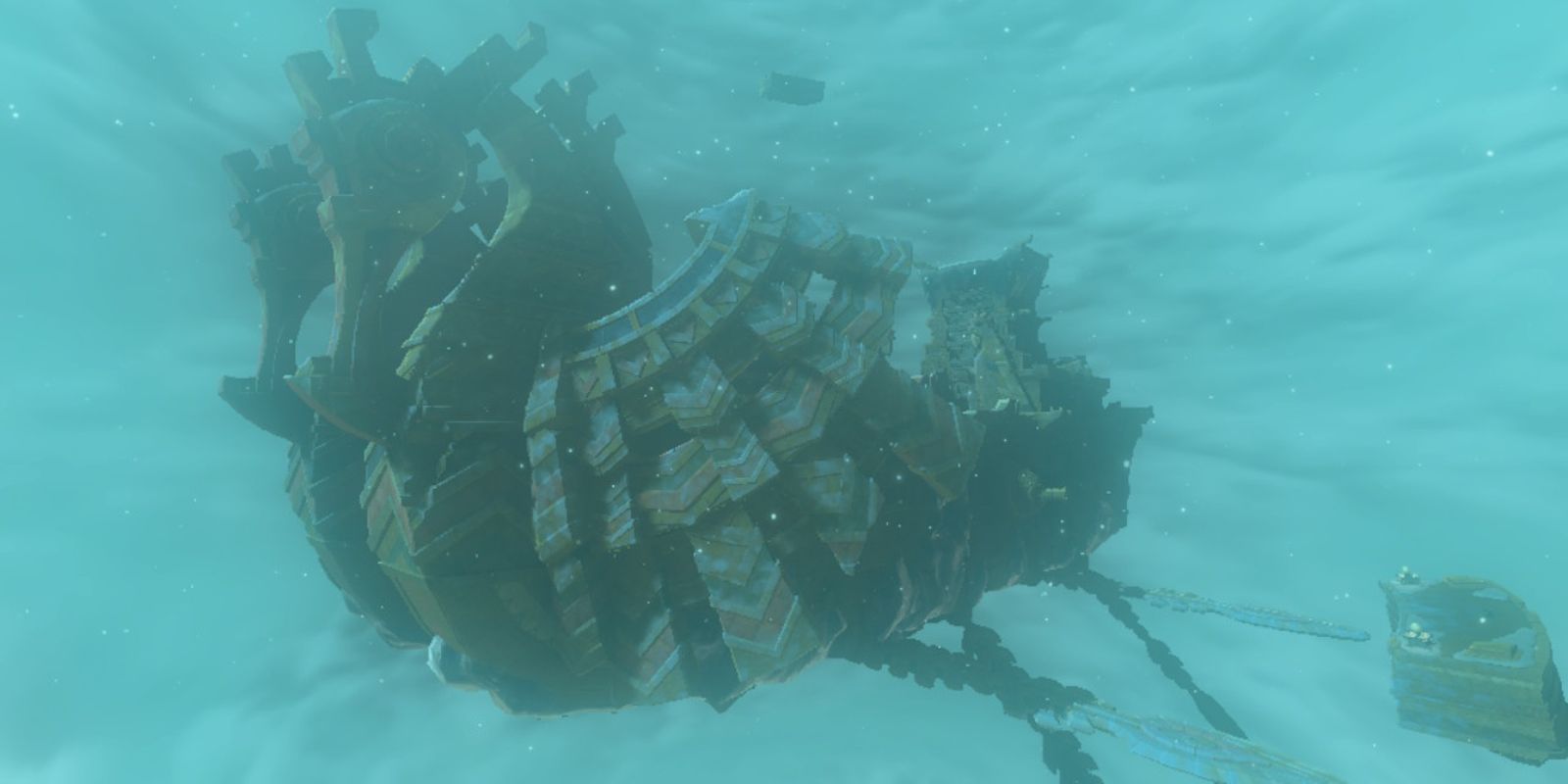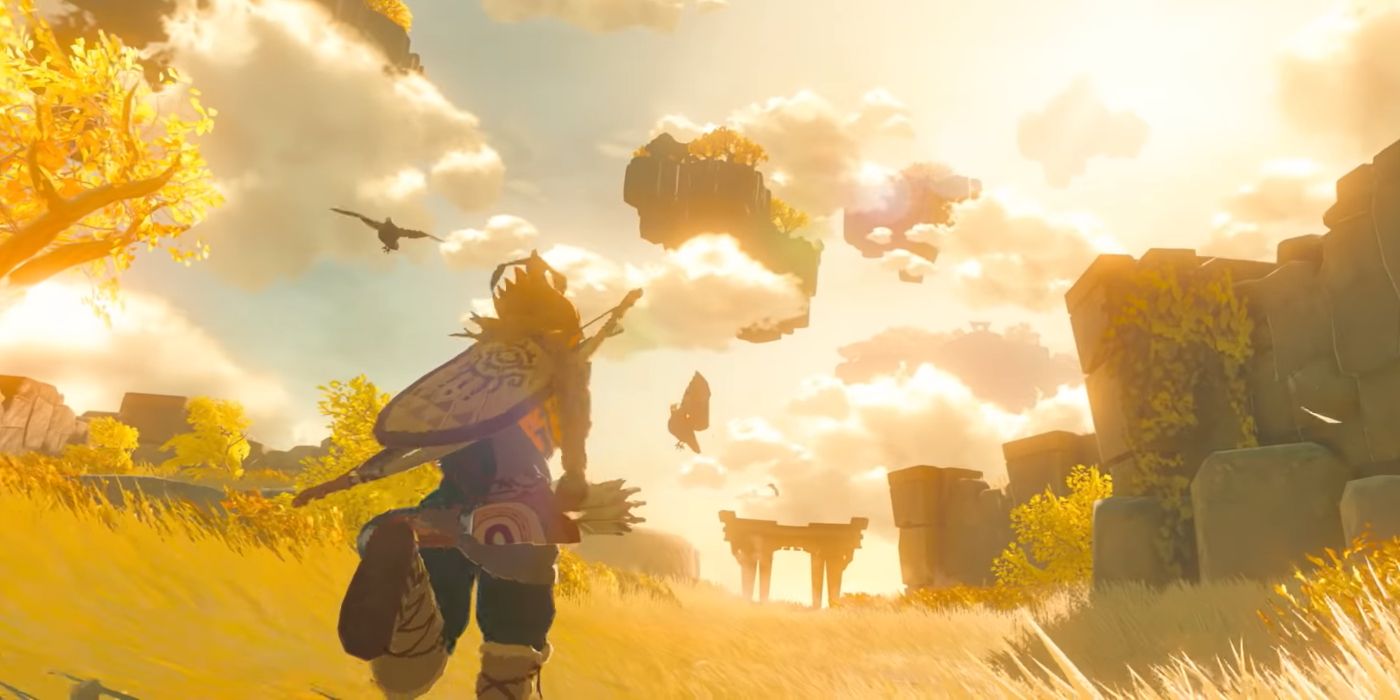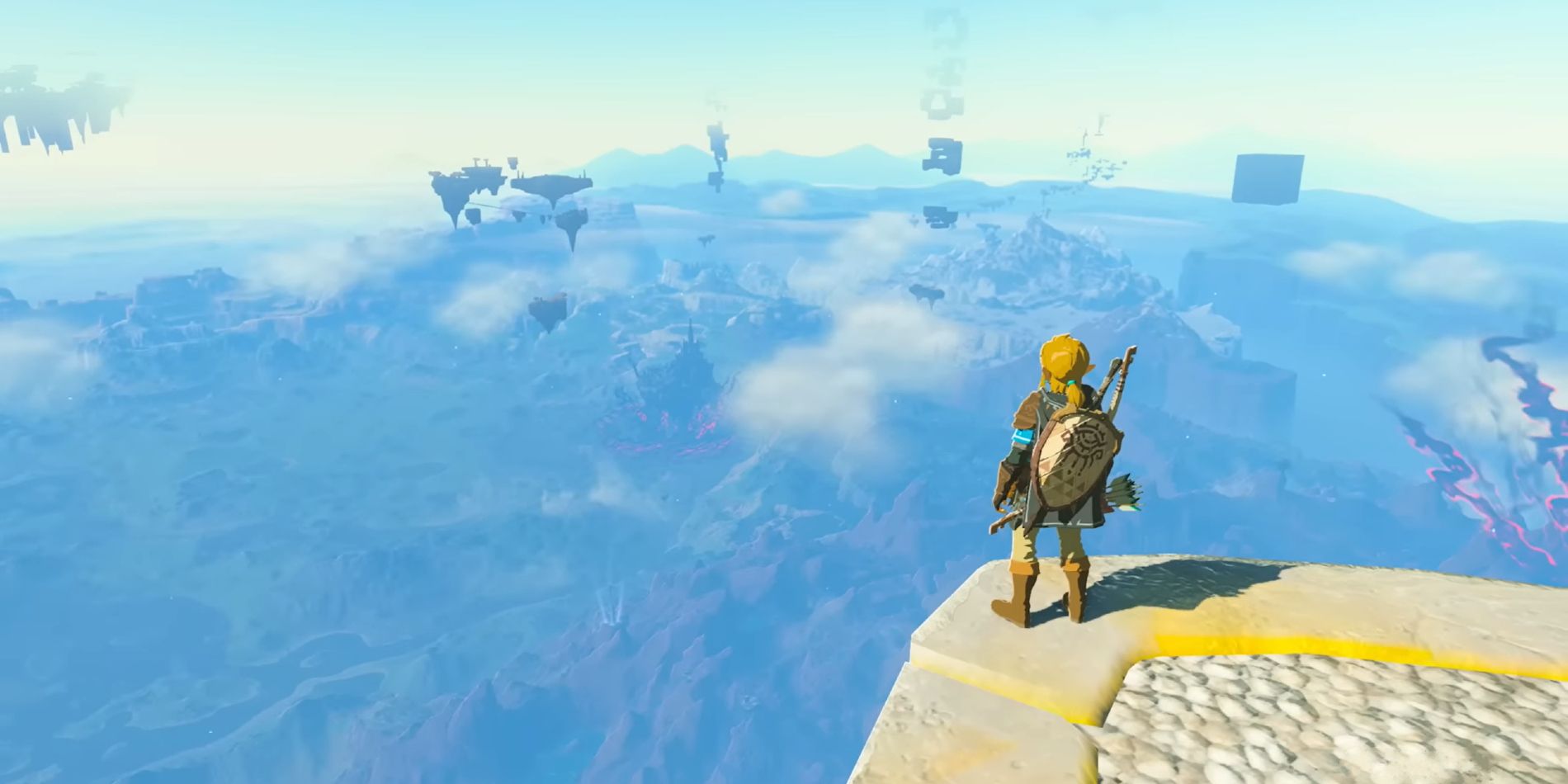Among the various Temples featured in The Legend of Zelda: Tears of the Kingdom, one perfectly encapsulates why TOTK ‘s lack of DLC is so unfortunate. TOTK’s Temples partially return to the classic Zelda dungeon format, which was notably absent in Breath of the Wild, although the Shrines of both games are effectively miniature dungeons in their own right. Each Temple utilizes a new mechanic to match its theme, but they can reveal more about the game than simply introducing gameplay features.
No matter which Temple players aim to beat first, even finding the ancient structure consists of an adventure in its own right. Found in locations ranging from the Sky to the Depths, the new dungeons are able to be comfortably situated within Hyrule with no awkward questions about how they went unnoticed in Breath of the Wild. Taking advantage of the newly expanded map in this way also helps to organically encourage exploration of the world. But even as the Temples highlight some of TOTK’s biggest draws, they can also draw attention to the game’s flaws.
The Wind Temple Demonstrates The Wasted Potential Of TOTK’s Sky
Rito Village and the Wind Temple are strongly encouraged to be Link’s first stop in resolving TOTK’s Regional Phenomena quests. And from the outset, this makes for an impressive experience in what is perhaps Link’s first proper visit to the Sky after finishing the tutorial section. He and Tulin climb higher and higher into the air, reaching truly dizzying heights in order to locate the source of the storm raging over Rito Village. The Stormwind Ark is an impressive sight, and exploring it is an excellent introduction to dungeons. But undercutting this sequence is one simple and unfortunate fact; as vast as the Sky is, it is notably empty.
Very few Sky Islands can match the Wind Temple in altitude, and they feel remarkably sparse overall. It is understandable that TOTK’s developers would not want the Sky to be crowded with extra landmasses, which would logically block out the sun for large parts of Hyrule. However, the number of Sky Islands is still a relatively common criticism for the game. The climb up to the Wind Temple is long and grueling, demonstrating the inherent unique potential of the Sky. With a Surface constrained by its depiction in Breath of the Wild, and the Depths a perfect reflection of that, the Sky alone held the possibility of entirely novel locations.
When the full scope of Tears of the Kingdom’s Sky Islands was realized, it was easy to point to the possibility of DLC to fill in the gaps. For a long time, considering Breath of the Wild’s own DLC package, such an eventuality was far from out of the question. Moreover, it seemed likely that DLC for TOTK would include new Shrines, and the addition of new Sky Islands to support some of these was not out of the realm of possibility. Now, however, it is clear that this will never come to pass, leaving many possible expansions to the game’s airborne content unrealized.
TOTK DLC Could Have Greatly Expanded The Sky
One of the more easily notable details of Sky Islands is that the majority follow one of a handful of templates, being nearly identical in size and shape with only minor variations to distinguish them (mostly related to Shrines). Naturally, DLC would have been perfect to not only expand the range of Sky Islands, but perhaps introduce other locations as well. After all, with Hyrule slowly coming to grips with Zonai Technology, NPCs creating their own floating structures or establishing new buildings on existing islands was not out of the question. Such a development could have introduced far greater variety to the game.
There are a multitude of ways in which new Sky Island content could have been presented. For example, the game’s maximum altitude could have been raised to provide access to new areas, or long-buried Zonai infrastructure could have reactivated and risen into the air. Meanwhile, even the most generic of Sky Islands could have benefited greatly from the effects of NPCs making their way into the Sky. The reintroduction of classic Zelda minigames, for example, would have been easily justified. In addition, new shops could have provided similarly new equipment, including weapons and armor.
Expanding the available content in the Sky could easily have contributed to a new storyline as well. The absence of Kass in the game was notable, for example, particularly given that Penn’s own storyline ends in a direct acknowledgment of the Rito bard. This seemed tailored towards foreshadowing DLC, suggesting that Kass could play a prominent role in the theoretical additional content. In addition to this, TOTK was well-positioned to have a DLC villain who could hatch a new plot among the Sky Islands – Master Kohga. This would have been a natural extension of what is perhaps TOTK’s most iconic feature.
Hyrule’s Enormous Sky May Never Receive The Content It Deserves
The effects of the Upheaval and the unveiling of the Sky Islands were among the first details revealed for TOTK, and have served to distinguish it from BOTW ever since. Furthermore, the Wind Temple and the journey up to it show the possibilities of this new dimension to Hyrule admirably; the sheer length of the climb demonstrates just how big the Sky is and, by extension, how much space there is to explore. But in reality, the more that the Sky is explored, the more evident it is that that same space is being underutilized. Somewhat ironically, Hyrule’s sky in Tears of the Kingdom is too empty.
Despite easily being equal to the Surface or Depths in volume, the actual area of the Sky which consists of visitable locations in TOTK is only a small fraction of either. As much as the Wind Temple demonstrates the range of the Sky, it also works to emphasize this disparity. The Sky in The Legend of Zelda: Tears of the Kingdom would have benefited immensely from the additions possible with DLC, which makes it all the more disappointing that such content is not planned for the game. Instead, it remains unclear if a sequel will expand on this version of Hyrule once more, or simply move on to the next.




